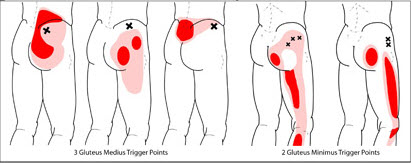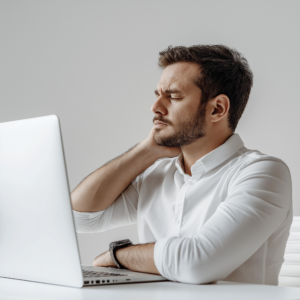Everyday in our clinic, we treat people with low back pain.
It’s a common problem, with about 80% of the adult population experiencing it at some point in their life. Despite being a scary situation when it happens, the good news is that only about 1% of the time is low back pain caused by a ‘serious’ medical condition, such as a fracture or tumor, and there are often significant neurological complications that accompany this situation (such as bowel or bladder incontinence and/or numbness in your groin area), or a large physical trauma which has caused it (like a car accident or a big fall). If you have any of these aforementioned symptoms or have had a physical accident which has resulted in back pain, you should seek medical attention immediately. If you haven’t experienced any of the above, keep on reading.
Now, even though the prognosis for low back pain is generally good, that’s not to say it can’t be incredibly painful, upsetting or debilitating at the time. Want to know what one of the best ways to help your back pain is? You have to stop doing the thing that is causing it in the first place! Let me explain…
(Now, before we go any further, it is worth mentioning that no one single thing is responsible for back pain. Mental health, sleep patterns, diet, expectations, general health, activity level and physical symptoms (such as muscle tightness, joint stiffness etc.) all come together and interlink when a person has back pain. The following is just one part of this, and is a very common observation I make daily at work).
In our office, I would estimate that about 90-95% of people seeking advice and treatment for low back pain have (or have had in the past) jobs that involve sitting for the majority of the day, and/or a sedentary lifestyle. Generally speaking, it isn’t someone who has lifted something heavy and hurt their back that is commonly coming through our doors (although for sure physical activity/ lifting and overuse can cause severe back pain as well), it’s people that spend a lot of time sitting. One study completed in 2015 (which you can find here) objectively measured sitting time and back pain, and found that the longer a person sits, the more low back pain they have.
The cause of low back pain caused from sitting/ inactivity is generally twofold:
- When you sit, your body weight goes onto your spinal cord and surrounding structures, leading to increased pressure on your spinal bones, joints, muscles and discs. This in turn can cause spinal stiffness and pain.
- Your gluteal muscles, the big muscles which forms the majority of your bum, get stretched out and irritated. This constant irritation leads to the formation of trigger points in the muscles, which make the muscle tight and weak, and can then send pain into your low back, buttock or leg.
If the red is pain, do any of these pictures look like what you have?
If so, you may well have tight gluteal muscles (or the ‘glutes’ as they are commonly known), because these pictures are patterns of pain that tight glutes cause! And the most remarkable thing about the glute muscles (when a person has low back pain or buttock pain)? A large percentage of patients I see in the clinic have tight, weak or tender to touch glutes on the same side as their back pain! And guess what? When we treat these tight and weak glutes, very often people start to feel better!
Now, you definitely have to take this with a pinch of salt because a) these are my own observations from working in the clinic and b) some people will have strong and flexible glutes and still have back pain, but I really do see this pattern of weakness and tightness daily in our clinic.
To do a quick test to see if your glutes are tight and/ or weak, we perform the ‘deer in the headlights’ test. This test has its name because of the face everyone pulls when they perform the test. Basically, in a lying down or sitting position, attempt to tighten up one set of bum muscles on one side while keeping the other relaxed (you’ll probably pull the deer-in-headlights face while trying this). Now, try and complete the same motion on your other side. Do you feel one side is harder to do, isn’t as strong or is more uncomfortable? Is this side you have more of your back pain? Quite often, it is.
Now if you can do this test normally, and flexing on one side is easy and they feel equal, you still may have some tightness or weakness there, but you will need a physiotherapist to physically test this for you.
So at this point, some of the things we have discussed may ring a bell with you, and maybe you have now found out that you have some tightness and weakness in one of your glute muscles, perhaps on the same side as your back pain. What now? Well, as a rule of thumb, we recommend trying to limit the amount of time you spend sitting down throughout the day. While this my be challenging, especially if you sit while working, tactics like getting up and moving around every 20 minutes or so should help, or, even better, purchase a standing desk for work. We have adjustable standing desks in each of the treatment rooms in our clinic, and they cost about $200 each from Amazon.ca. They sit right on top of the desks we have in each room, so they don’t take up too much space. So while that was an investment on our part, we can now all stand more then we sit, and it helps to look after our backs (yes, physios can get painful backs too!).
The other way to relax those tight muscles is to come and make an appointment with one of our team, who will be able to assess and treat your low back pain.
One fantastic treatment option we use everyday in our clinic for when gluteal muscles cause low back pain is to undergo a procedure called Intramuscular Stimulation (IMS for short); click here to learn more about IMS, and check out this blog post for further reading).
While I’ve tried to make this blog post as broad as possible, the fact is that back pain is multifactorial, and sitting isn’t the cause of back pain for everyone. Even if it is a large factor, there can be other reasons for having back pain which are not in the scope of what I am writing about today. Having your back assessed by a registered health care professional with experience in assessing and treating patients with low back pain is a great way to help get it resolved and prevent it from happening again.
Disclaimer: this blog article is not intended to be used in the absence of, or a substitute for, medical advice from a medical doctor or registered physiotherapist, and should not be used instead of an examination with a medical doctor. If you have low back pain, you should have it assessed first by your family physician or registered physiotherapist before following the advice in this blog.






